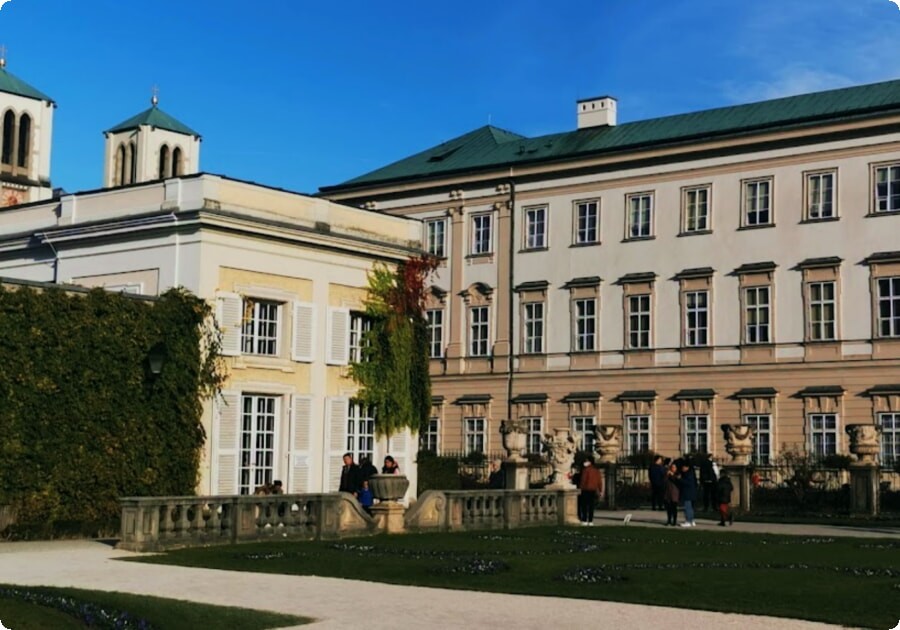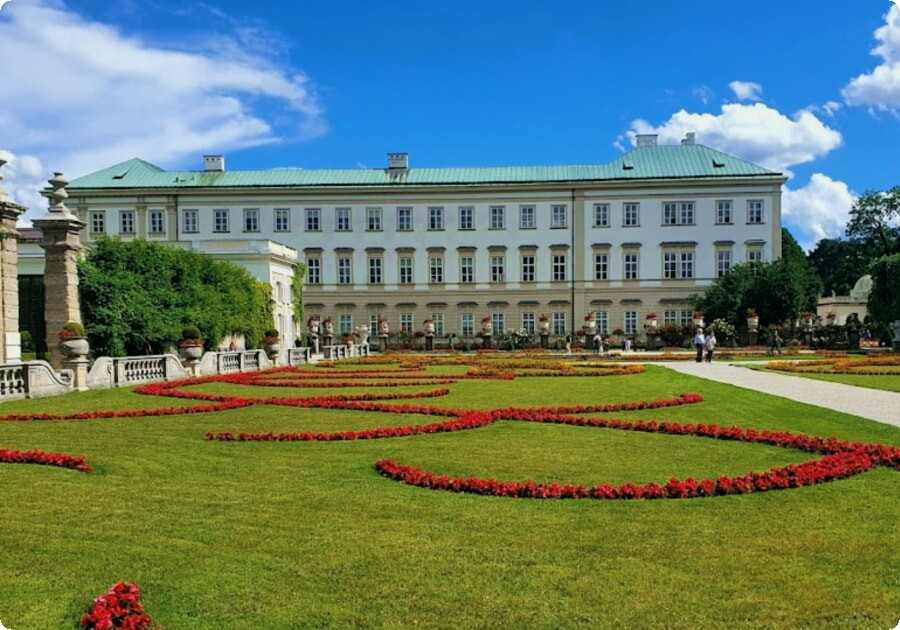Sights of Austria
Mirabell Palace
A creamy-pink fabulously beautiful ensemble, buried under the crowns of green plants, surrounded by bright flowers - this is how the Mirabell Palace, located in the Austrian city of Salzburg, can be described. The majestic history of the palace begins in the distant 17th century, then it was called Altenau, in honor of the beloved of Archbishop Wolf Dietrich von Reitenau, the beauty Salome Alt. Since then, the architectural structure has been one of the five most beautiful buildings in Austria. Every year, thousands of tourists gather in the gardens of the same name Mirabell to admire this amazing luxury. The palace is surrounded by many fountains and statues, and violets and irises of unreal beauty bloom near the ensemble even in winter. Translated from Italian, the name Mirabelle means "admiration." The palace rightfully deserves such a name.
Most tourists consider renting a car one of the best ways to enjoy all that Austria has to offer. Renting an economy class car in Vienna will cost about 15 euros per day, in Salzburg - about 16 euros per day.
Abbey of Saint Peter
Stift Sankt Peter is the oldest monastery in Salzburg built in 690. Yes, this time, on the site of the construction, the rock of Menkhsberg (Mountain of Monks) towered, in the caves of which hermits lived. It was from this monastery that the creation and development of the city began. The Abbey of St. Peter is striking in its splendor and antiquity. The decoration is the statue of St. Rupert, the founder of the monastery, located on the bell tower at the entrance. The Baroque style is mixed here with the Romanesque, which is what gives it a special luxury. In the center of the ensemble is a fountain and a statue of St. Peter. The late Baroque interior of the cathedral features sea shell ornaments. The main red marble altar houses the relics of Saint Rupert. Near the altar stands a statue of the Beautiful Madonna. In addition to architectural chic, the abbey is proud of a large library.
Nonnberg Abbey
Nonnberg Abbey is a nunnery in picturesque Austria, located in the north of Salzburg since 714. The founder of the monastery is Saint Rupert, and the first abbess of the monastery was his sister Erentrud. The holy complex consists of the chapel of St. John, the church of St. Mary, monastic rooms, a library and a dining room. A fire in 1423 badly damaged the buildings of the abbey, after which it was rebuilt, preserving the original Romanesque style. Frescoes give a special beauty to the monastery. In addition, real masterpieces of Gothic are located on the territory. Tourists are especially attracted by the sounds heard around Nonnberg Abbey - this is the singing of the nuns of the monastery. Unfortunately, tourists can only visit the Nativity Church at the monastery and the chapel of St. John, the entrance to other buildings is closed.


Leopoldskron Palace
In the south of Salzburg, near the lake, one of the most beautiful buildings in the Rococo style is located - Leopoldskron Palace. The palace got its name in honor of its founder Leopold Firmian. It was on his instructions that the construction of the castle for the family of the archbishop began. Over time, the building has undergone many changes and has changed hundreds of owners. In 1918, the director Max Reiphardt became the owner of this splendor. He spent more than 20 years on the restoration and reconstruction of the ensemble. Since then, the castle boasts a large library, a chic front staircase, rooms made in the Venetian style. These days, the castle is privately owned, making it difficult to get inside. However, seminars are regularly held in the buildings of the complex, which you can sign up for. Especially the palace was chosen by local newlyweds who get married in a small chapel near Leopoldskrona.


Church of Saint Cajetan
In 1150, on the site of the hospital of St. Anne, the building of a Roman Catholic church in the Baroque style, the Church of St. Cajetan, was erected. The massive and majestic building strikes the imagination of tourists who gather in hundreds around this historical wealth. Already at the entrance to the church, visitors are greeted by the main old staircase of 1712 of 49 steps. The facade is decorated with columns in the Ionic style, and the top is crowned with a dark green dome with a drum. The interior luxury of the shrine is amazing. Under the dome is the image of the Holy Spirit, on the altars are the faces of the patrons of the church - St. Caetan and St. Maximilian. The main altar is decorated with a canopy with figures of angels, stucco on the walls completes this ensemble. An organ has been preserved in the church since 1770. This musical instrument is one of the oldest instruments in the city.